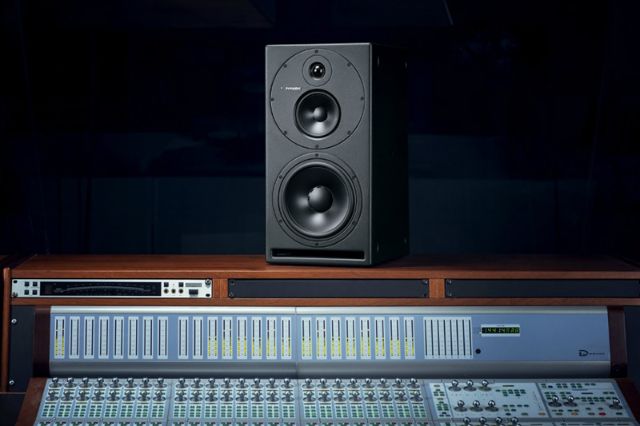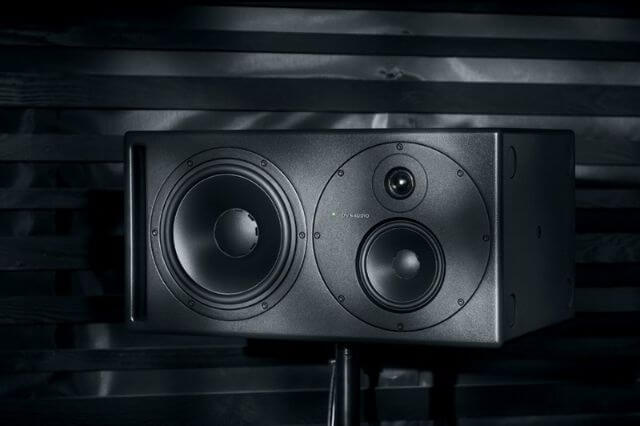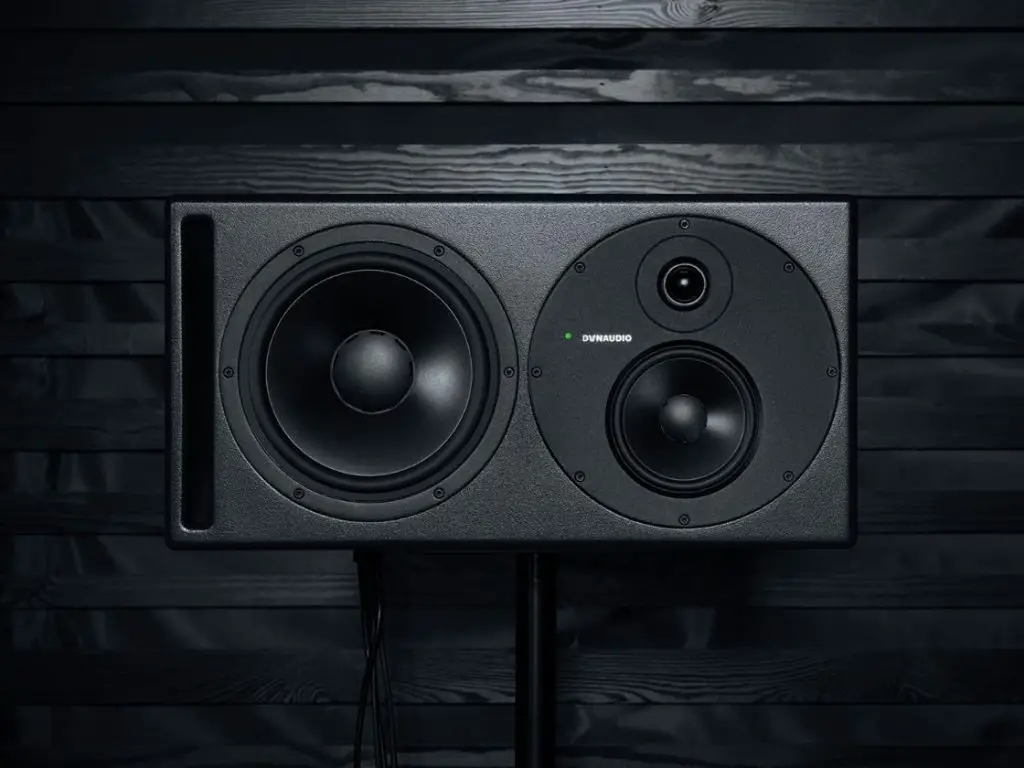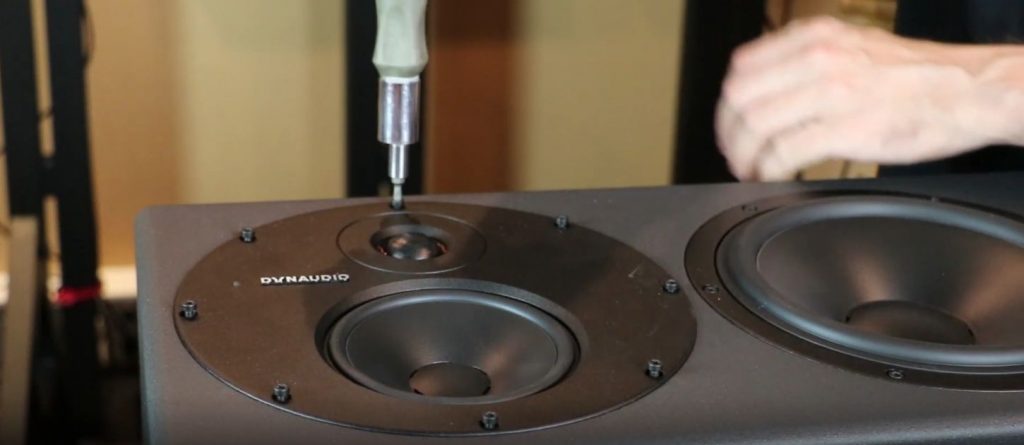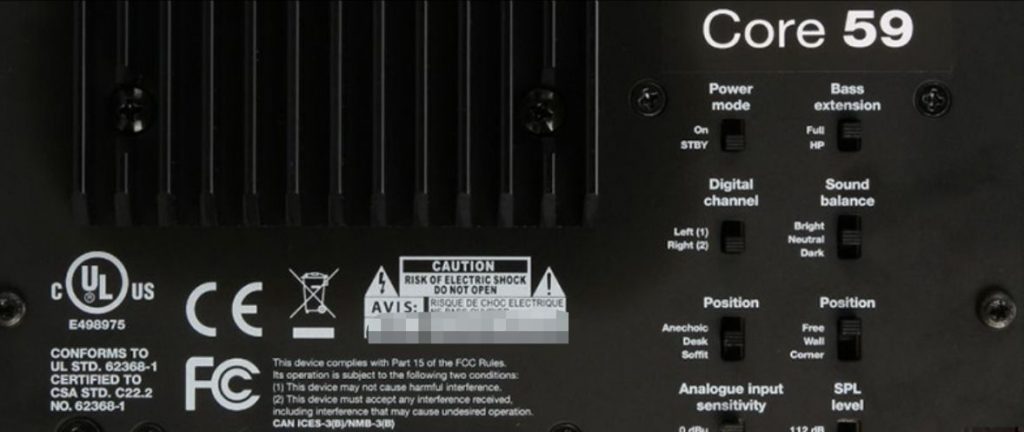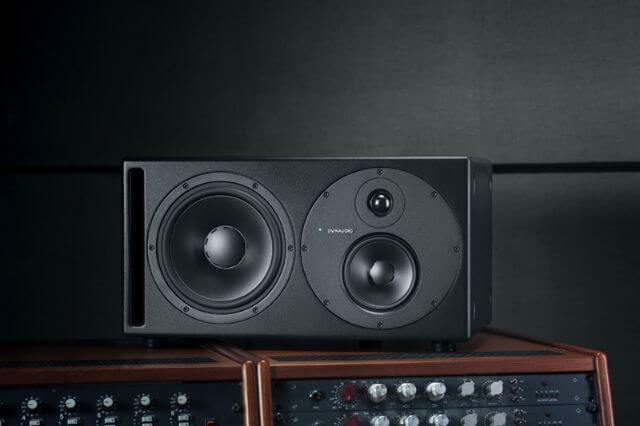Dynaudio Core 59 Review
Dynaudio Core 59 is outstanding. Regardless of the various frequency bands of the instrument can perform well. On the Core 59, you can see Dynaudio’s solid R&D capabilities, including the Esotar Pro silk tweeter and the continuation of the Air series’ multi-directional display features. Dynaudio Core 59 can be said to be a good choice for professional recording studios!
When a professional recording studio devotes itself to music production with the listening skill that has been trained for many years, it often needs a reliable reference monitoring system to ensure that the work produced with painstaking effort meets expectations. Dynaudio Core 59 is such a monitor speaker with excellent sound quality in terms of positioning and cohesion.
If you want to introduce the Dynaudio Core 59 speaker in a few simple words, it can be said that it is a masterpiece for meticulous and perfect professional musicians. Regardless of the design of the cabinet and the unit, it refers to the recording engineer. Daily work needs. For example, using the latest Esotar Pro silk tweeter, the cabinet design to be placed according to users’ needs, and the excellent low-frequency dive ability is all outstanding examples.
Design
Take a closer look at the single design of the Dynaudio Core 59 3-way Powered Studio Monitor. For professional recording studios, listening fatigue caused by listening to a track for a long time is often a huge dilemma. It is even possible that after feeling tired, a whole day of hard work will come to nothing. To cope with this situation, Dynaudio uses a newly designed Esotar Pro silk tweeter on the Core 59. This monomer can effectively avoid auditory fatigue and enable the producer to ensure that the output is perfect.
The soft dome tweeter that can produce sweet sound quality has always been a notable feature of Dynaudio. Especially behind the core 59’s new-generation Esotar Pro silk tweeter, a vibration suppression device called Hexis is installed. This device itself is made of composite materials, and its low resonance and high damping characteristics can effectively improve airflow. It makes the frequency response smoother, and at the same time, eliminates the excess internal resonance, reducing the fatigue of the human ear.
In the midrange unit, Dynaudio Core 59 uses a 5-inch magnesium silicate polymer (MSP) diaphragm monomer. This diaphragm has the characteristics of lightweight, high rigidity, and high damping. The voice coil is made of pure aluminium and matched with neodymium iron boron magnets, which has precise control and frequency response characteristics to improve the monomer’s control. Besides, because the crossover points of Core 59 are set at 312Hz and 5,100Hz, each unit can present each frequency domain’s sound with more margin and can further reduce distortion.
The woofer part of Core 59 is equipped with a 9-inch half-stroke woofer that also uses an MSP diaphragm. A ceramic magnet drives this unit to drive a voice coil made of copper and glass fibre. Its built-in Class D amplifier is designed by Danish Pascal, and its output power can reach 500 watts. This woofer has excellent low-frequency control, which means it can show excellent transient response and low frequency. According to official data, its low frequency can dive as low as 42Hz.
Senior professional recording studios know that the Air series speakers launched by Dynaudio in the past have been recognized by the market, which makes the Air series even known as a revolutionary product in the field of monitor speakers. The Air series is equipped with the “Dynaudio 221” technology. This technology designs the speaker’s high and midrange speakers into a form that can be rotated with the placement, ensuring that phase distortion can be avoided no matter how you place it during use. In Core 59, you can also see this thoughtful design.
From the perspective of cabinet design, the Core series also continues the Air series’s multi-directional placement characteristics. For example, the Core 59 cabinet has grooves compatible with special suspension pads on all four sides. When placing speakers, Regardless of the material of the platform’s contact surface, as long as it is used with a floating pad, the contact surface and resonance can be significantly reduced. The multi-position and rotatable design allow you to display excellent sound quality when you are doing professional recording, regardless of whether it is placed vertically, horizontally, wall-mounted, or even the cabinet is placed upside down.
The market has recognized the Air series because its powerful DSP digital audio processing technology is also a significant reason and its high degree of freedom of placement. After Dynaudio’s improvement, Core 59’s DSP can be said to be at a higher level. For example, it can process audio up to 192kHz/64bit, and it can also adjust four different sound pressures, including 88dB, 96dB, 100dB, and 112dB. , You can adjust the sound pressure to an ideal state according to the situation.
The advanced DSP function of Dynaudio Core 59 active studio monitor is compelling. In addition to adjusting the sound pressure (SPL Level) and gain (Analogue input sensitivity), there are also adjustment buttons for the position and sound balance.
Each unit of Core59 is equipped with an independent Class D amplifier. A 500-watt amplifier drives the bass unit and midrange unit, and a 150-watt amplifier drives the tweeter unit.
Setting
Regarding the placement of Core 59, Dynaudio has also set up two filters that can be adjusted accordingly. For example, when placing the speakers on the desktop, you can adjust the “Position” filter on the left to “Desk” to compensate for the first reflection on the mixer’s surface. If the speaker is placed against a wall, it can be adjusted to “Soffit” to compensate for the increased low-frequency response. If used as a speaker stand, it can be adjusted to “Anechoic” to add a wide sound field.
The “Position” filter on the right has three modes: “Wall”, “Corner”, and “Free”. In theory, when you place Core 59 against a wall, ceiling, or corner (within 50 cm), you can adjust the filter to “Wall” or “Corner”. Conversely, if it is more than 50 cm away from the wall, ceiling, or corner, it can be adjusted to “Free” to present a perfect sound quality.
Through the “Sound balance” regulator equipped with Core 59, you can also adjust the sound quality to darker, brighter and other characteristics. If adjusted to “Dark”, the audio above the 20kHz frequency domain will drop -1.5dB, and the audio below the 20Hz frequency domain will rise +1.5dB, and the sound quality presented at this time will be dark. If adjusted to “Bright”, the audio above the 20kHz frequency domain will increase by +1.5dB, and the audio below the 20Hz frequency domain will decrease by -1.5dB, and the sound will be brighter at this time.
If you want to listen to more neutral sound quality, it is recommended to adjust the sound balance of the Core 59 to “Neutral”. This kind of fine adjustment can make the monomers reach a more balanced and ensure that the sound quality is in line with the taste of professional users. By the way, the input of the Dynaudio Core 59 Class D Monitor also has an adjustable gain design. When using it, you can adjust the 4-band gains of 0 dB, +4dB, +18dB, and +24 dB so that the sensitivity of the analogue input and the speaker can be a perfect match.
For detailed operation, Dynaudio recommends that when a professional device outputs a +24 dBu signal, the Core 59 gain can be adjusted to +24 dBu; if a household device outputs a -10dBu signal, it is recommended to adjust it to 0dBu. The method of adjusting the gain size corresponding to various sources will enable the speakers to play the best sound quality.
Sound Performance
When playing symphony tracks, you can hear the monitoring characteristics of Dynaudio Core 59’s tri-band equalization. The overall picture is excellent in-depth and comprehensive. No matter the violin, cello, brass pipe, or bass drum, the instruments are pretty condensed and positioned. They are magnificent but full of details, and they are delightful to listen to.
In terms of Jazz, pop music, or electronic music, Core 59 has an excellent low-frequency response. In addition to diving deep enough, it is also flexible and sounds very exciting. But even if the low-frequency performance is good, it will not affect the performance in other frequency domains. The human voice is still condensed with moisture, the lead guitar plucking sound echoes the picture intact, and the accompaniment instruments are scattered around steadily and balanced. The monitoring performance can withstand the test of all kinds of tracks.
Conclusion
In general, the sound quality of the Core 59 is a high-resolution type, but this does not mean that its image is slim. On the contrary, it is excellent whether it is in the performance of vocals, musical instruments, or various sound effects. Besides, it has the charm of being able to pull the listener into the performance scene as soon as the repertoire is sounded. And every good detail in the sound field can be seen at a glance, and the picture and layering are very rich.
Finally, if you want to describe the sound quality of Dynaudio Core 59 briefly, there are only two words “very real”. The Core 59’s diverse and flexible use forms make it very suitable for a near-field, midfield, or primary monitoring system. Core 59 is very suitable for processing music, mixing and recording production, or game soundtrack. Of course, it is also perfect for listening to it at home!
Dynaudio Core 59 Specs
- Tweeter: 1in
- Midrange: 5in
- Woofer: 9in
- Inputs: Analogue and AES3 digital inputs
- Maximum 24-bit/192 kHz: Depending on input signal
- Maximum SPL: 112 dB @ 1 m anechoic, 118 dB half space
- Specification sheet for Core part 1
- Crossover frequency: 385 Hz (LF/MF) / 5000 Hz (MF/HF)
- Frequency response: 36 Hz – 31 kHz -6 dB
- Frequency response: 42 Hz – 27 kHz +/- 3 dB
- Principle: Front-loaded bass reflex
- Amplifiers: Pascal Class-D. HF 150 W / MR 500 W / LF 500 W
- Dimensions (WxDxH): 280 x 380 x 550 mm (11 x 15 x 21 11/16in)
- Weight: 24.6 kg (54.2 lb)
